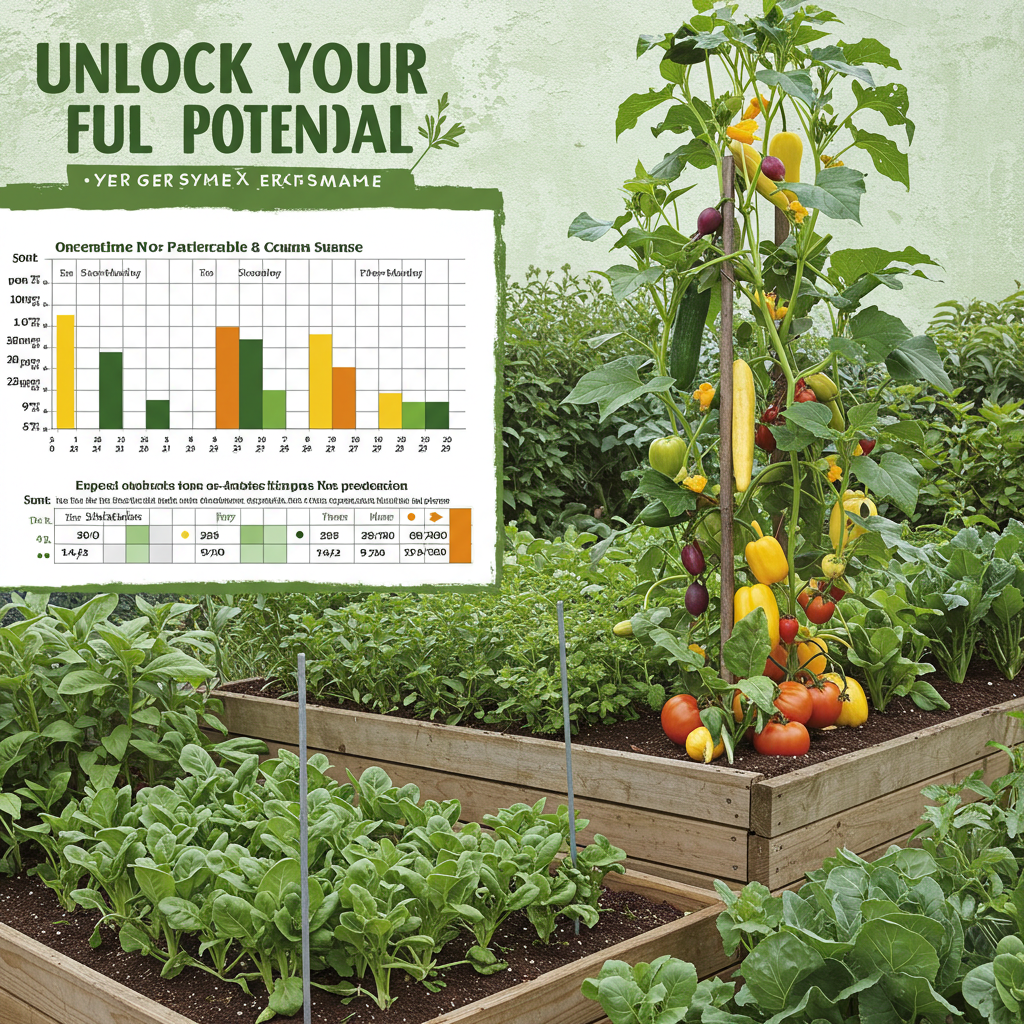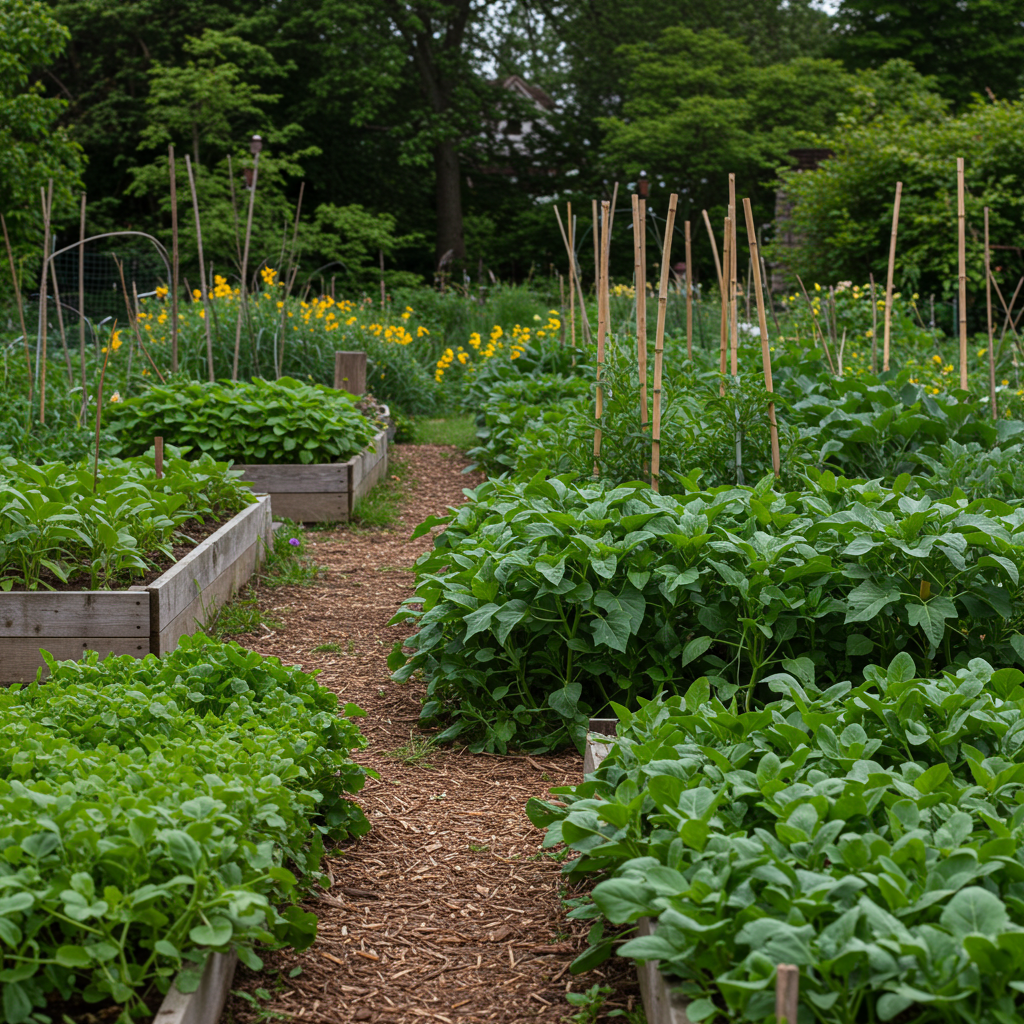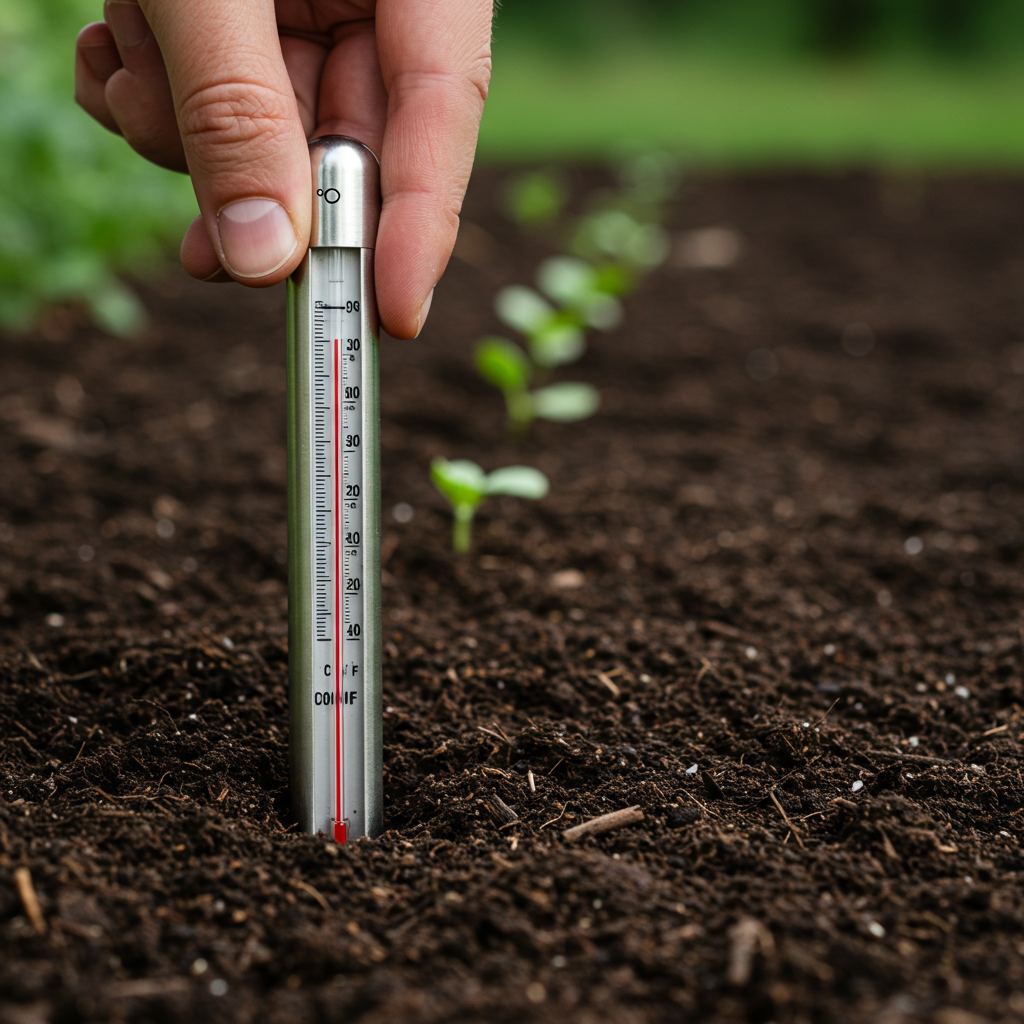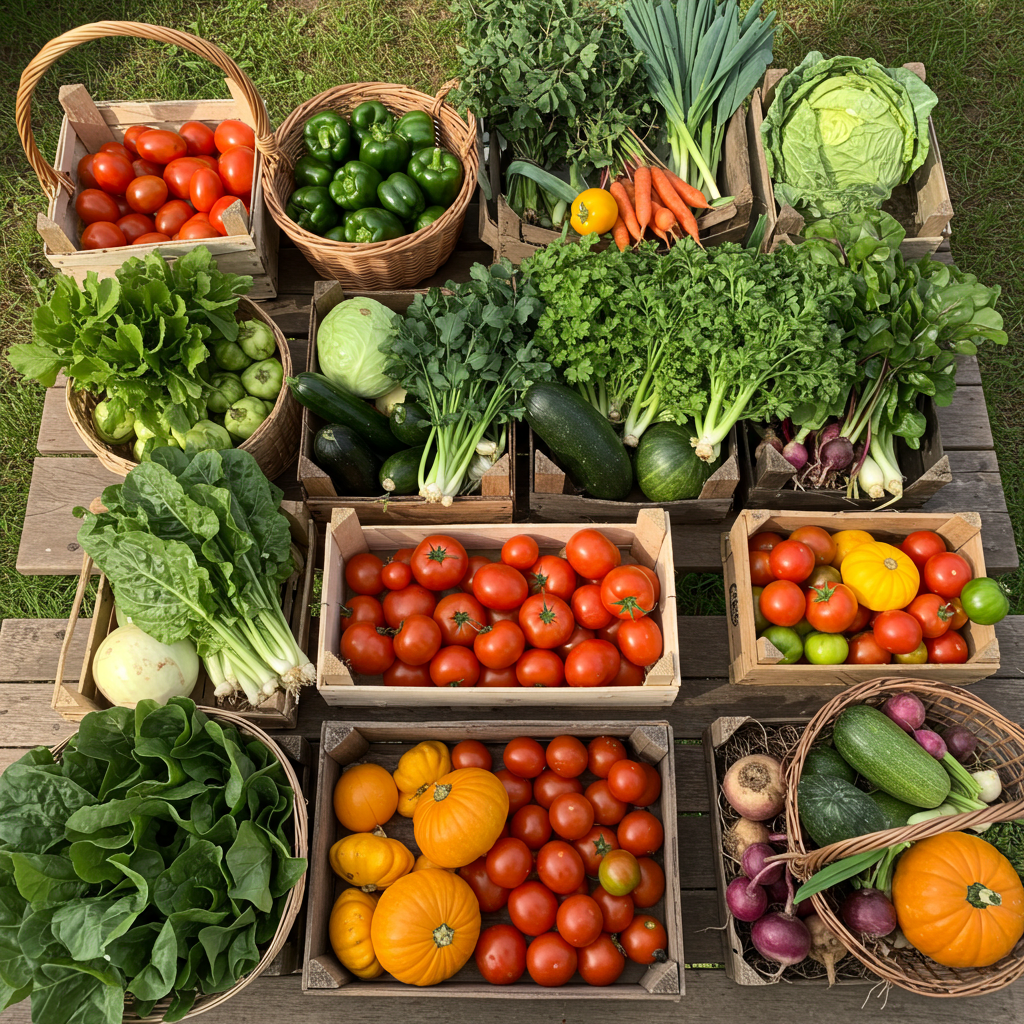Every gardener dreams of a bountiful harvest, a flourishing array of fresh vegetables plucked straight from their backyard. While diligent care, proper watering, and healthy soil are undoubtedly crucial, one factor often overlooked in its profound impact on yield is timing. Planting vegetables at the optimal moment can mean the difference between a meager crop and an overflowing basket.
But what exactly *is* the “best time”? It’s not a universal date on the calendar. Instead, it’s a dynamic interplay of climate, specific plant needs, and a keen understanding of your local environment. This comprehensive guide will equip you with the knowledge to pinpoint the perfect planting windows for maximum vegetable yield, transforming your garden from good to truly glorious.
Understanding the Fundamentals of Planting Timing
Successful planting isn’t just about sticking a seed in the ground when the sun starts shining. It’s about creating the ideal conditions for germination, root development, and robust growth, protecting young plants from extremes, and allowing them to mature fully within their natural season. Three critical factors primarily dictate when to plant:
1. Climate and Hardiness Zones: Your geographical location, particularly its typical temperature ranges and frost patterns.
2. Frost Dates: The average last day of freezing temperatures in spring and the first day in fall.
3. Soil Temperature: The warmth of the soil, which directly impacts seed germination and root establishment.
Critical Factors Influencing Planting Time
1. Climate Zones and USDA Hardiness
Understanding your USDA Plant Hardiness Zone is a foundational step. These zones, based on average annual extreme minimum winter temperatures, give a broad indication of what plants can survive winters in your area. While primarily for perennials, they offer context for overall climate. More importantly for vegetables, consider your region’s general climate: temperate, tropical, arid, etc. This influences not just winter lows but also summer highs and overall growing season length.
- Long Growing Seasons: Regions with long, warm summers can often accommodate multiple successions of warm-season crops and have extended windows for cool-season varieties.
- Short Growing Seasons: Areas with brief summers may require starting seeds indoors earlier, selecting fast-maturing varieties, or utilizing season extenders.
Consult your local extension office or online resources (like the USDA plant hardiness zone map) to identify your specific zone. This information, combined with local microclimates, will inform your general approach.
2. Frost Dates: Your Garden’s Calendar Keepers
Frost dates are arguably the most crucial markers for vegetable planting. Young vegetable plants are incredibly sensitive to freezing temperatures. A late spring frost can decimate newly planted seedlings, while an early fall frost can prematurely end your harvest.
- Last Spring Frost Date: This is the average date after which there is a 50% chance of no more freezing temperatures in your area. It’s the go-to date for when it’s generally safe to plant tender, warm-season vegetables outdoors.
- First Fall Frost Date: This is the average date by which freezing temperatures are expected to return in the autumn. It marks the typical end of the warm-season growing period and serves as a deadline for harvesting sensitive crops.
How to Use Frost Dates:
- Cool-Season Crops: Many can be planted *before* the last spring frost, as they tolerate or even prefer cooler temperatures and light frost (e.g., peas, spinach, lettuce, broccoli). They can also be planted in late summer/early fall for a second harvest before the first fall frost.
- Warm-Season Crops: These must be planted *after* the last spring frost, once all danger of freezing temperatures has passed (e.g., tomatoes, peppers, beans, squash). Some may even require waiting an extra week or two past this date for the soil to warm sufficiently.
Remember, these are *averages*. Always keep an eye on local weather forecasts and be prepared to protect young plants with row covers or blankets if an unexpected cold snap is predicted.
3. Soil Temperature: The Unsung Hero
While air temperature is what we often feel, soil temperature is what matters most to germinating seeds and developing roots. Different seeds have specific minimum soil temperatures they need to germinate successfully. Planting too early into cold soil can lead to poor germination, rotting seeds, or stunted growth, even if the air temperature seems mild.
- Warm-Season Crops: Require warmer soil (typically 60-85°F / 15-29°C) for optimal germination and root development. Planting tomatoes, peppers, or squash into cold soil can shock them, leading to slow growth and reduced yields.
- Cool-Season Crops: Prefer cooler soil (typically 40-70°F / 4-21°C) and can germinate in conditions too cold for warm-season varieties.
How to Measure Soil Temperature:
Invest in a soil thermometer. Insert it 2-4 inches deep in the morning, around 10 AM, for several consecutive days to get an accurate average. If the temperature is consistently within the ideal range for your chosen crop, you’re ready to plant.
4. Sunlight Requirements
While not directly dictating *when* to plant, sunlight is crucial for *where* to plant and affects a plant’s overall vigor and yield. Most vegetables are “full sun” plants, meaning they need at least 6-8 hours of direct sunlight per day. Others, like leafy greens, can tolerate “partial shade” (3-6 hours of sun), especially in hot climates where afternoon sun can cause bolting.
Assess your garden’s sun exposure throughout the day and choose planting locations that meet your vegetables’ needs. Adequate sunlight ensures strong, productive plants that can reach their maximum yield potential.
When to Plant Specific Vegetable Categories for Maximum Yield
Understanding the general principles is key, but applying them to specific vegetable types is where the magic happens.
Cool-Season Vegetables: Early Birds of the Garden
These vegetables thrive in cooler temperatures, often tolerating light frosts. They typically have two optimal planting windows in many regions:
- Early Spring: As soon as the soil is workable and has warmed slightly (usually 40-50°F / 4-10°C), often 4-6 weeks *before* your last spring frost date.
- Late Summer/Early Fall: For a second harvest, plant them 6-8 weeks *before* your first fall frost date, allowing them to mature in the cooling temperatures of autumn.
Examples and Their Ideal Soil Temps:
- Peas: Soil 40-70°F (4-21°C). Plant as soon as soil can be worked in early spring.
- Spinach, Lettuce, Arugula: Soil 40-75°F (4-24°C). Early spring, and again in late summer/early fall.
- Radishes: Soil 40-85°F (4-29°C). Quick growers, plant every 1-2 weeks in early spring.
- Broccoli, Cabbage, Kale (Cole Crops): Soil 50-75°F (10-24°C). Start indoors early, transplant out a few weeks before last frost. Plant again in late summer for fall harvest.
- Carrots, Beets: Soil 50-85°F (10-29°C). Plant after danger of hard frost, can handle light frost.
Warm-Season Vegetables: Summer’s Bounty
These heat-lovers cannot tolerate frost and require consistently warm soil and air temperatures to thrive. Their planting window is typically *after* all danger of frost has passed in spring, and often a couple of weeks beyond, once the soil has truly warmed up.
Examples and Their Ideal Soil Temps:
- Tomatoes: Soil 60-85°F (15-29°C). Transplant after all danger of frost, when nighttime temperatures consistently stay above 50°F (10°C).
- Peppers: Soil 65-85°F (18-29°C). Similar to tomatoes, but even more sensitive to cold; wait until nights are reliably warm.
- Squash (Summer & Winter), Zucchini, Cucumbers: Soil 60-95°F (15-35°C). Direct sow seeds or transplant starts after last frost and soil is warm.
- Beans (Bush & Pole): Soil 60-80°F (15-27°C). Direct sow seeds after last frost; they germinate quickly.
- Corn: Soil 60-95°F (15-35°C). Direct sow seeds after last frost, ideally when soil is closer to 65°F (18°C).
- Melons: Soil 65-95°F (18-35°C). Very heat-loving; plant well after last frost and when soil is very warm.
Extending Your Harvest: Succession Planting & Season Extension
To truly maximize yield, don’t just plant once! Incorporate these strategies:
- Succession Planting: Instead of planting all of a crop at once, plant smaller batches every 2-3 weeks (e.g., lettuce, radishes, bush beans). This staggers your harvest, preventing gluts and ensuring a continuous supply. For crops like corn or tomatoes, plant different varieties with varying maturity dates.
- Season Extension Techniques:
- Row Covers: Lightweight fabric placed over plants to trap heat and offer a few degrees of frost protection, allowing earlier planting in spring and later harvests in fall.
- Cold Frames: Bottomless boxes with a clear top, acting like mini-greenhouses, perfect for hardening off seedlings or growing cool-season crops earlier/later.
- Greenhouses/Polytunnels: Provide significant season extension, allowing for year-round or near-year-round growing in many climates.
- Mulching: Organic mulches can help regulate soil temperature, keeping it warmer in spring and cooler in summer. Black plastic mulch can significantly warm soil for heat-loving crops.
Practical Tips for Optimal Yield
- Start Seeds Indoors: For warm-season crops (tomatoes, peppers) and crops with long maturity periods (broccoli, cabbage), starting seeds indoors 4-8 weeks before your last frost date gives them a head start, leading to earlier and often larger yields.
- Harden Off Seedlings: Before transplanting outdoor, gradually expose indoor-started seedlings to outdoor conditions (wind, sun, cooler temperatures) over 7-10 days. This prevents shock and ensures a smoother transition.
- Choose Appropriate Varieties: Select vegetable varieties suited to your specific climate and growing season length. “Days to Maturity” listed on seed packets is your guide.
- Monitor Weather Forecasts: Stay updated on local weather, especially in spring and fall, to protect plants from unexpected temperature drops.
- Prepare Your Soil: Healthy, well-draining soil rich in organic matter is fundamental. Good soil biology helps plants better utilize nutrients and tolerate stress, indirectly impacting their ability to thrive when planted at the right time.
Conclusion
Gardening is a dance with nature, and timing is the rhythm that guides it. By understanding your local climate, paying close attention to frost dates and soil temperatures, and knowing the specific needs of each vegetable, you empower your garden to reach its full potential. Embrace these strategies, and you’ll not only enjoy a maximized yield but also the profound satisfaction of nurturing a truly thriving garden. Happy planting!



